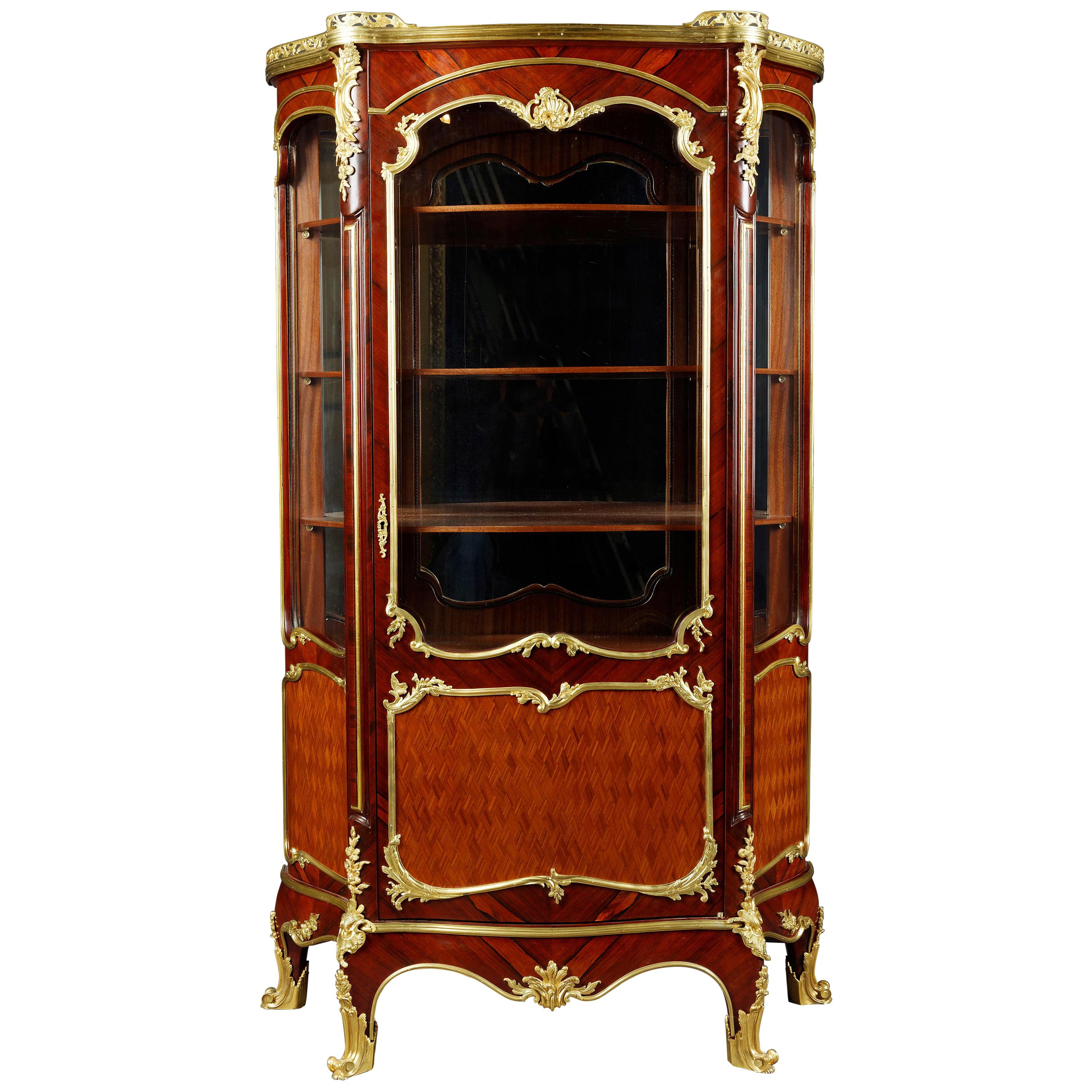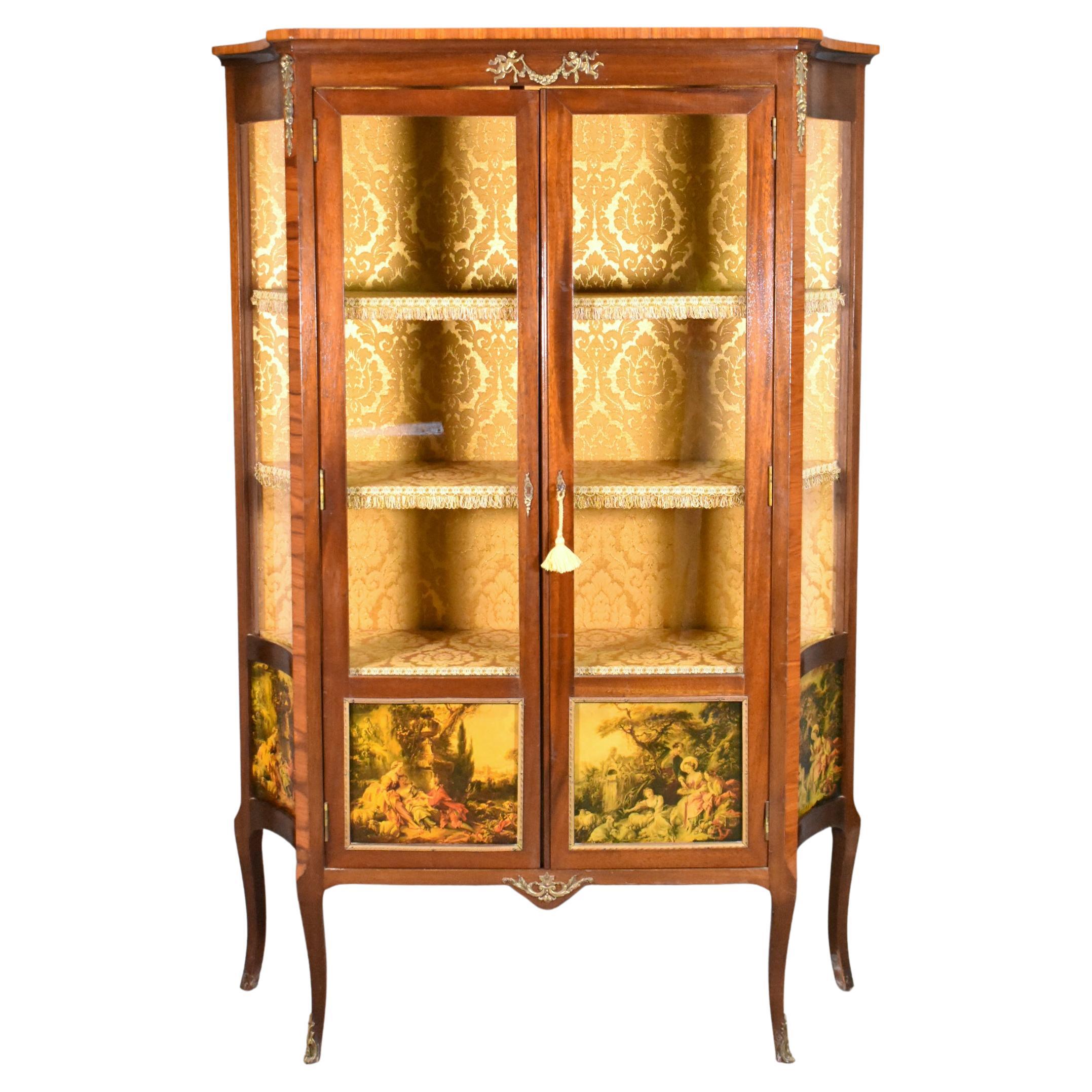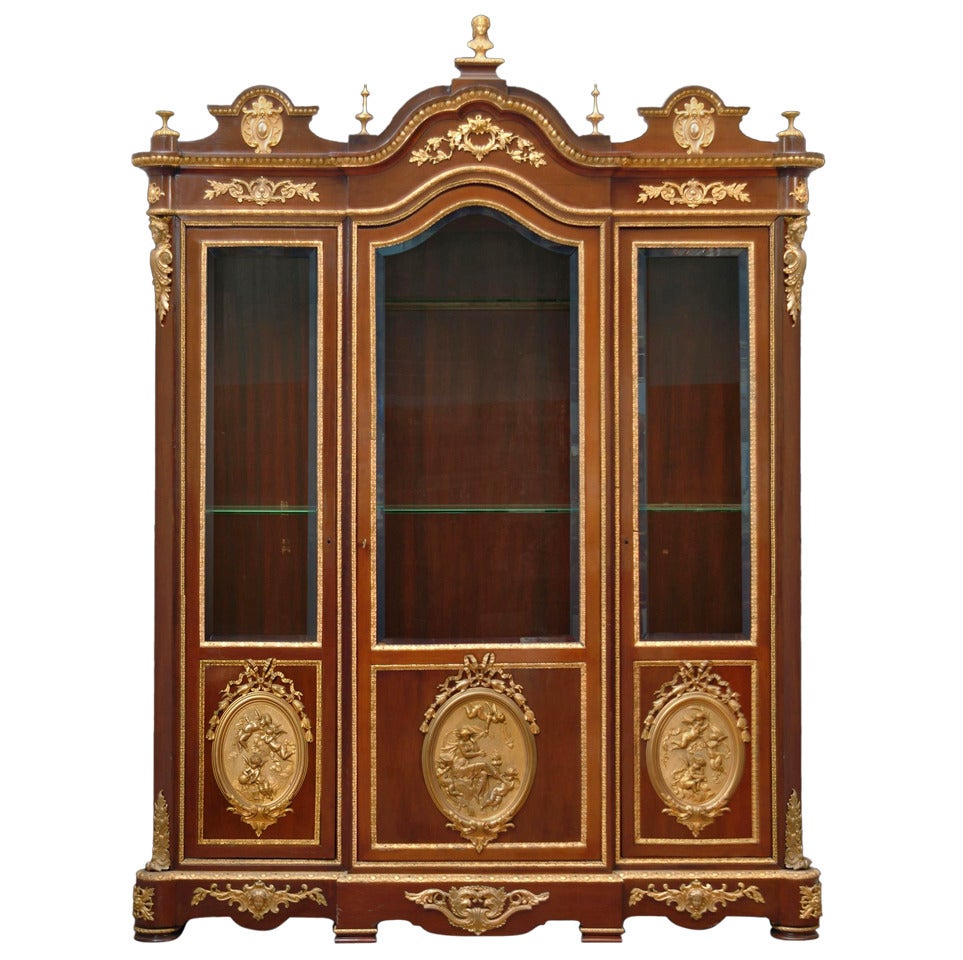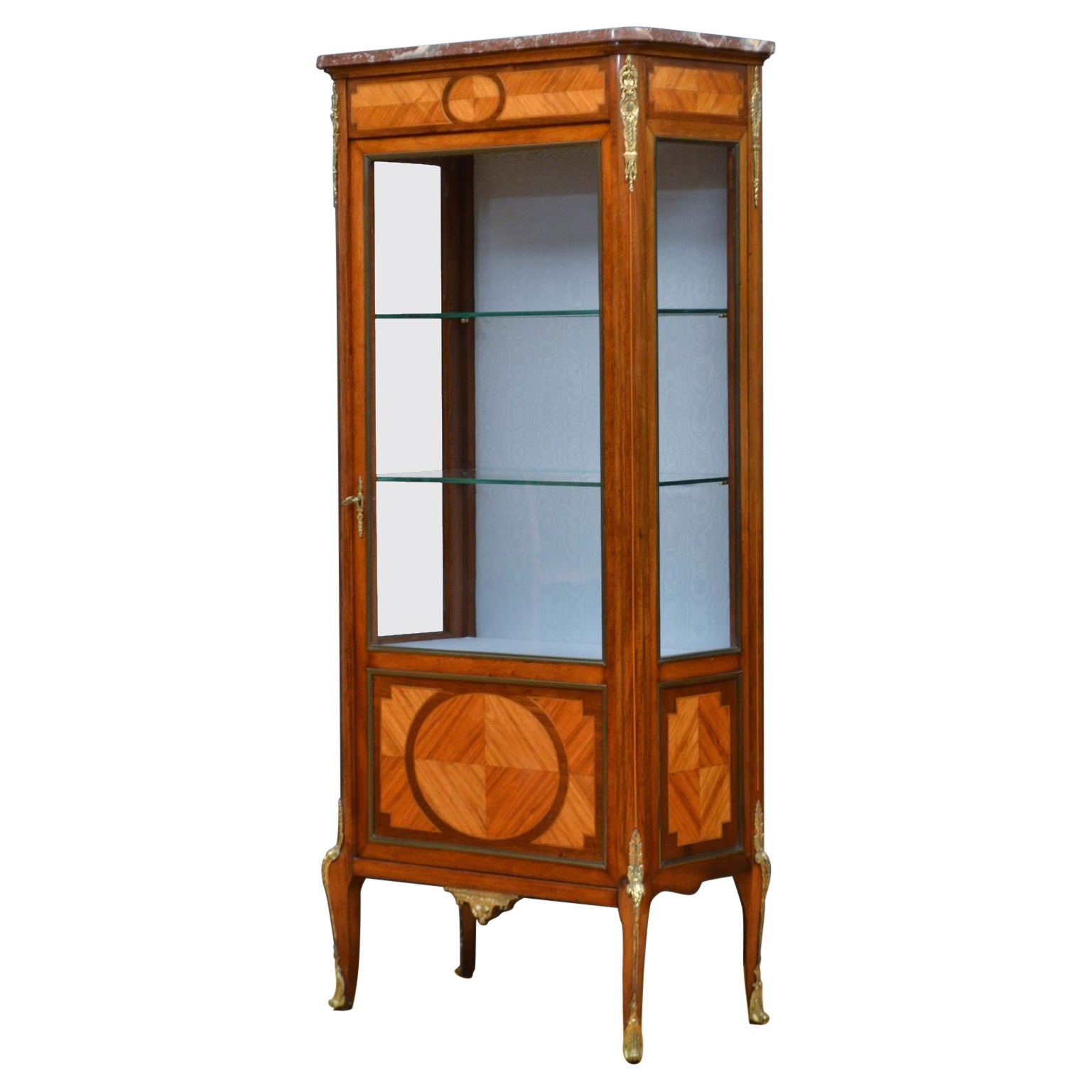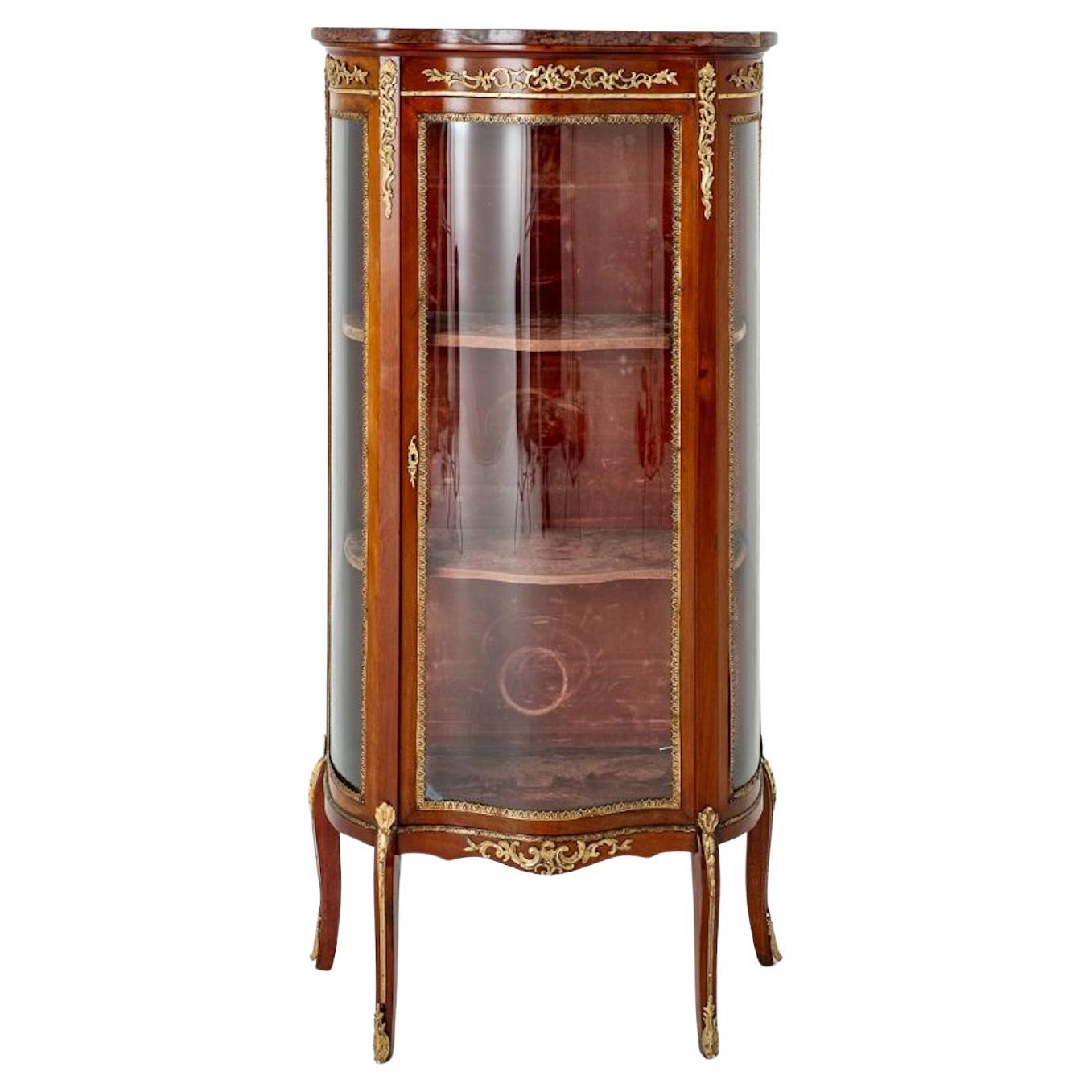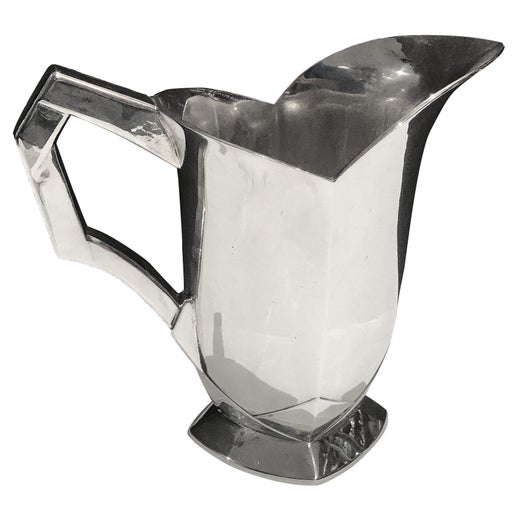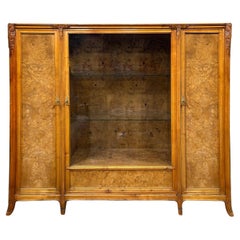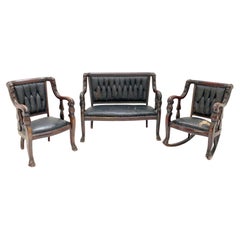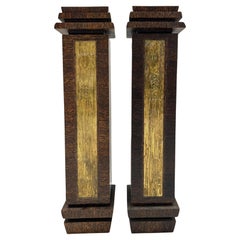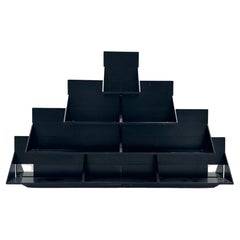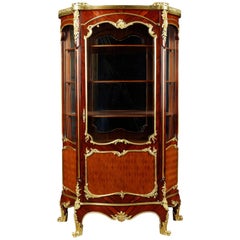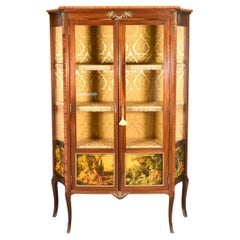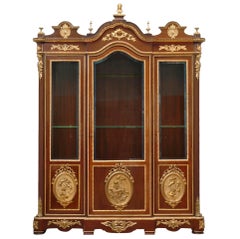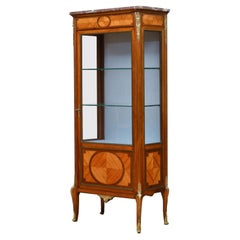Louis Süe - Rare Vitrine en Fer Forgé et Placage de Merisier (vers 1948)
About the Item
- Creator:Louis Sue (Artist)
- Dimensions:Height: 66.54 in (169 cm)Width: 11.03 in (28 cm)Depth: 40.95 in (104 cm)
- Materials and Techniques:
- Place of Origin:
- Period:
- Date of Manufacture:1948
- Condition:Wear consistent with age and use.
- Seller Location:NEUILLY-SUR-SEINE, FR
- Reference Number:1stDibs: LU9892240411162
Louis Sue
Louis Süe was a man of many artistic talents who excelled in a range of disciplines in the Parisian design scene of the early 20th century. He was a painter, furniture maker, decorator and architect — he drew on traditional design but sought to make modernist work. His best known furniture designs included wall mirrors, console tables and armchairs created in the elegant Art Deco style, and his interior designs spanned private residences and passenger liners.
Süe was born in Bordeaux and enrolled at the École des Beaux-Arts in 1893. In 1902, his work was exhibited at the Salon d'Automne and the Salon des Indépendants, and he continued exhibiting at Parisian salons over the course of his career. Beginning in 1903, Süe collaborated with other artists to create workshops and cooperative businesses in the city.
One of the most significant partnerships of Süe's career was with French artist and textile designer André Mare, with whom Süe became acquainted while working at an interior design firm called L’Atelier Français. In 1919–20, the pair, known as Süe et Mare, founded the Compagnie des Arts Français, which specialized in furniture, tapestries, wallpaper and silverware. The founders intended to draw on 18th-century furniture to create modern works and were inspired by Cubism and Art Nouveau and created forward-looking Art Deco designs that are widely celebrated today.
Inspired by the work of Austrian collective Wiener Werkstätte, Süe and Mare grew a successful business at the Compagnie des Arts Français, mass-producing furnishings and objects, taking on a range of wealthy clients and employing artists such as Marie Laurencin, Paul Vera and Fernand Léger. One of their interior design projects was the Polish Embassy in Paris. In 1925, Süe and Mare designed the Fontaine & Cie Pavilion at the International Exhibition of Modern Decorative and Industrial Arts in Paris, which featured works by André Groult, Maurice Dufrêne and others.
The Compagnie des Arts Français struggled financially toward the end of the 1920s and was sold to the owners of the French department store Galeries Lafayette. Jacques Adnet, who was working with Dufrêne at the decorative arts atelier of Galeries Lafayette, was appointed artistic director of the Compagnie and steered the firm in a different direction.
After Süe left the Compagnie, he worked as an independent architect and designer. Some of his notable projects include the Basque villa of French fashion designer Jean Patou, completed in 1931, and the reconstruction of Hôtel Hesselin in Paris, completed in 1937.
Süe became the treasurer of the Société des artistes décorateurs in 1936 and was named the society president in 1939. That was also the year he designed the French Village for the New York World's Fair. During World War II, he lived in Istanbul and lectured at the Institute of Fine Arts. He returned to France after the war and passed away in Paris in 1968.
In 2021, around 30 pieces of furniture by Süe et Mare from the estate of German-born fashion designer Karl Lagerfeld went to auction at Sotheby's. Many of Süe's designs are held in the collection of the Metropolitan Museum of Art.
On 1stDibs, find antique Louis Süe tables, seating, mirrors and more.
- ShippingRetrieving quote...Shipping from: Saint-Ouen-sur-Seine, France
- Return Policy
More From This Seller
View AllVintage 1910s French Mid-Century Modern Vitrines
Wood
Antique 1880s British Colonial Living Room Sets
Wood
Vintage 1930s French Art Deco Pedestals
Glass, Palmwood
Vintage 1960s Italian Mid-Century Modern Bookcases
Wood
Vintage 1950s French Art Deco Wall Lights and Sconces
Bronze
Vintage 1920s French Mid-Century Modern Dining Room Tables
Marble
You May Also Like
20th Century Vitrines
Bronze
Mid-20th Century French Vitrines
Ormolu
Antique 19th Century French Vitrines
Bronze
Antique Late 19th Century French Vitrines
Tulipwood
Antique Early 1900s Cabinets
Glass, Mahogany
Antique Late 19th Century French Vitrines
Brass
